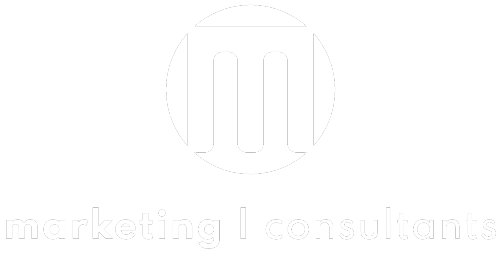Which is a better marketing investment–TV or radio?
Both still play a powerful role in consumer behavior, with TV and radio reaching more than 90% of adults weekly. But comparing the two isn’t as simple as looking at cost. The real question is: what kind of return can you expect based on your goals and how you plan to measure success?
This article serves as a brief intro to what makes TV and radio valuable, how to compare their ROI, and how to choose based on what matters most to your business.
What ROI Really Means in Media Buying
ROI, or return on investment, is often framed as a simple formula: money in vs. money out. But when it comes to media buying, it’s more nuanced.
TV and radio don’t typically drive conversions on the same day an ad airs. Instead, they often impact longer-term brand recognition, search behavior, and purchase intent. That’s why marketers are shifting from pure attribution models toward incrementality and media mix modeling, especially when evaluating offline channels.
ROI is more than a number. It’s a tool to evaluate effectiveness based on what your campaign is trying to achieve. If you’re focused on brand awareness, success might look like increased search volume or survey-based brand lift. If you’re running a sale, you’re probably looking at store traffic, calls, or conversions.
The most important thing is to make sure your definition of ROI matches your objective.
TV Advertising ROI: What to Track and Why
TV advertising still delivers when it comes to reach, authority, and memorability. Research by the Video Advertising Bureau shows that TV drives the highest return on ad spend (ROAS) among major media, particularly when paired with creative that evokes emotion or tells a story.
But TV measurement has evolved. Whether you’re buying traditional linear TV or streaming-based Connected TV (CTV), there are key metrics that can help track ROI more effectively:
- Cost Per Thousand (CPM): This tells you how much you’re paying to reach 1,000 viewers. It helps compare the efficiency of different ad buys across programs, networks, or time slots.
- Gross Rating Points (GRPs): This measures total ad exposure by multiplying the percentage of your target audience reached by how often they see your ad. For example, reaching 30% of your audience with 4 exposures equals 120 GRPs. While GRPs show campaign weight, they don’t measure actual impact—just estimated exposures. To understand real results, pair them with outcome metrics like search trends or brand lift.
- Brand Lift: This can be measured through surveys or tools that compare pre- and post-campaign brand perception. Platforms like Nielsen Brand Lift or Lucid Impact Measurement offer ways to measure how your message is landing.
- Website Traffic and Search Trends: TV can drive web interest. A spike in branded searches during or after your campaign often signals engagement. Tools like Google Analytics and Google Trends can help monitor those patterns.
If you’re using CTV platforms like Hulu, Roku, or YouTube TV, you may also have access to real-time tracking, audience segmentation, and pixel-based attribution tools. This adds an additional layer of insight, but even without advanced tech, TV remains measurable and impactful when the right benchmarks are used.
With so many different ways to utilize TV advertising, many businesses turn to professional TV media buying to ensure they are achieving the best possible TV Advertising ROI.
Radio Advertising ROI: Strengths and Measurement Tips
Radio offers something TV can’t always deliver: frequency and local or national focus at a more accessible price point.
Ways to measure ROI from radio include:
- Reach and Frequency: Are you hitting the same audience often enough to stay top-of-mind?
- Listener Response Windows: Track store visits, web traffic, or calls during and shortly after your ad slots.
- Promotional Codes or Landing Pages: Assign a unique URL or offer code to each campaign so you can trace response more easily.
- Cost Efficiency: Radio typically offers more air time for the same budget, which helps increase exposure, especially in smaller markets.
In many cases, radio can be used to support larger campaigns or seasonal pushes where repetition and local presence matter more than visuals. That makes it a strong tool for conversion-focused or budget-conscious advertisers.
Even though radio advertising can be more accessible, it still takes precision and expertise to execute correctly. Working with a professional radio media buyer can help businesses properly approach radio advertising to drive the highest ROI possible.
Common Pitfalls in Comparing TV and Radio ROI
Trying to evaluate both channels using the same metrics can lead to faulty conclusions. Each works differently, and both have value, but only if you’re measuring the right things.
Avoid these common mistakes:
- Relying too heavily on attribution tools: TV and radio aren’t clickable like digital ads, so their impact isn’t always captured by standard attribution models. But that doesn’t mean they’re ineffective—look for indirect signals like spikes in web traffic, branded search, or store visits.
- Focusing only on immediate conversions: Not all ROI is immediate. Some of the most valuable effects—like increased brand awareness or purchase consideration—take time to surface.
- Ignoring the full funnel: These channels often play a bigger role at the top of the funnel. If you’re only tracking final sales, you’ll miss a lot of their impact.
Choosing TV vs. Radio Based on Your Marketing Goals
Use your campaign objectives to guide which media channel is the better fit:
- If you want to build awareness or brand credibility: Go with TV. It offers strong reach and visual storytelling.
- If you need a quick response or want to promote a local event or offer: Radio’s frequency, psychological advantages, and lower cost can help drive timely action.
- If your budget is limited: Radio may allow you to buy more placements and sustain a longer campaign.
- If you’re rolling out a big brand message or launch: TV will help you make a strong first impression.
In many cases, using both TV and radio together delivers the strongest results—TV builds the brand, while radio drives response.
Both are proven media channels with distinct strengths, but ROI isn’t about picking a winner. It’s about aligning your media choices with your goals, measuring what matters, and learning what works.
ROI Isn’t Just a Number
Ready to optimize your radio or TV advertising ROI? We help brands of all sizes and budgets plan smarter campaigns that work harder for every dollar. Contact us today for a free consultation.
FAQs
What’s the difference between TV and radio ROI?
TV ROI typically focuses on broad reach, brand awareness, and long-term brand lift. It’s often tracked through metrics like CPM, GRPs, or search volume lift. Radio ROI is more focused on frequency and local response, and can be measured using offer redemptions, listener engagement, or direct response tracking tools.
Is TV advertising still effective in a digital-first world?
Definitely. TV continues to deliver strong results, especially for brand awareness and credibility. According to Nielsen, TV reaches over 90% of adults weekly. It plays a key role in driving search interest and influencing purchase decisions across channels.
How do I measure brand lift from TV or radio ads?
Brand lift can be measured through surveys (pre- and post-campaign), changes in branded search volume, or third-party tools like Nielsen Brand Effect or Lucid Impact Measurement. It helps quantify awareness and perception shifts rather than immediate conversions.
What’s a good ROI for a local TV campaign?
There’s no universal benchmark, but local TV campaigns often aim for at least a 2:1 to 4:1 return on ad spend (ROAS), depending on the industry and market. However, the real value often shows up in increased foot traffic, search interest, or long-term customer growth, not just direct sales.
How do I compare the cost of TV vs. radio advertising?
TV is usually more expensive per impression but offers broader visual impact. Radio tends to have a lower CPM and allows for more frequency within a limited budget. Comparing cost should include both the spend and the outcome it delivers—ROI, not just price.
Should I run both TV and radio ads together?
Ultimately it depends on your marketing goals, but they are commonly run in tandem. TV can build awareness while radio reinforces the message with frequency. When used together strategically, the two channels can complement each other and improve overall campaign performance.
How long should a TV or radio campaign run before I measure ROI?
Give your campaign at least a few weeks to gather enough data. Brand lift and search impact often take time to show. For response-based campaigns, you may start seeing results in the first 7-14 days, but full ROI measurement should wait until the campaign is complete.
What kind of businesses benefit most from radio advertising?
Radio is especially effective for businesses with a local focus or time-sensitive offers, such as:
- Restaurants
- Retail stores
- Auto dealers
- Event promotions
- Service-based businesses (HVAC, legal, etc.)
It works best when your message needs frequency and fast reach.
About the Author

Mike McNeill
Mike McNeill is the founder of M-Marketing Consultants, bringing over 20 years of experience in media buying, marketing strategy, and business growth. With a passion for helping people and businesses reach new heights, Mike specializes in crafting innovative, data-driven campaigns that deliver measurable success. As a franchise owner of The Good Feet Store, he combines entrepreneurial insight with a dedication to improving lives. His expertise has made him a trusted authority in navigating the complexities of modern media and driving meaningful results.

